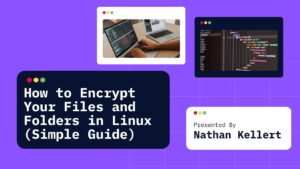Imagine showing up to work and your AI agent already sorted your inbox, drafted your meeting notes, and booked your calendar for the day. Sounds like sci-fi, right?
Not anymore.
Thanks to powerful LLMs (like GPT-4, Claude, and open-source models), you can now build your own AI agent that automates real tasks—like writing emails, managing calendars, summarizing documents, and more.
In this guide, I’ll show you exactly how to build a smart, flexible AI agent that can automate parts of your daily workflow, using tools like LangChain, OpenAI, and simple scripting. You don’t need to be an AI researcher—just a dev who wants to save time and build cool stuff.
Table of Contents
What Is a Workday Automation Agent?
It’s basically a personal AI assistant that:
- Connects to your tools (email, calendar, Slack, Notion, etc.)
- Uses an LLM (like GPT-4 or Claude) to understand context
- Can take actions (send messages, create events, summarize info)
- Runs on a schedule or reacts to events (like a new email or task)
This isn’t just a chatbot—it’s a task-oriented agent that acts on your behalf.
What It Can Automate (Real Examples)
- Read and summarize emails or Slack threads
- Auto-draft replies or messages
- Schedule or reschedule meetings
- Summarize Zoom transcripts or Google Docs
- Create daily digests or weekly reports
- Fetch info from Notion, Google Calendar, Trello, etc.
You can even connect it to Zapier or APIs to automate entire workflows.
Tools You’ll Need
You don’t need a huge stack. Here’s a minimal setup:
- LLM Provider: OpenAI (GPT-4o), Claude, or an open-source model
- LangChain (or LlamaIndex) for agent orchestration
- Python for scripting logic
- APIs for calendar, email, Notion, Slack, etc.
- Scheduler: Cron, Airflow, or serverless triggers
Optional: a frontend dashboard with React or Streamlit to monitor tasks.
Step-by-Step: Build Your Own Workday AI Agent
Step 1: Set Up the Project
mkdir workday-ai-agent && cd workday-ai-agent
python -m venv venv && source venv/bin/activate
pip install openai langchain google-api-python-client slack_sdk fastapi
Set your API keys and tokens in a .env file:
OPENAI_API_KEY=your-openai-key
GOOGLE_API_TOKEN=...
SLACK_BOT_TOKEN=...
Step 2: Define the Agent
Using LangChain:
from langchain.agents import initialize_agent, Tool
from langchain.llms import OpenAI
llm = OpenAI(temperature=0)
tools = [
Tool(name="Calendar", func=schedule_meeting, description="Schedule a meeting"),
Tool(name="Email", func=check_email, description="Check and summarize email"),
Tool(name="Slack", func=post_to_slack, description="Send message to Slack"),
]
agent = initialize_agent(tools, llm, agent="zero-shot-react-description")
Step 3: Add Your Automation Logic
For example, every morning at 9 AM:
import schedule
import time
def morning_routine():
print("Running AI agent morning tasks...")
response = agent.run("Check my email, summarize unread messages, and post a summary in Slack.")
print(response)
schedule.every().day.at("09:00").do(morning_routine)
while True:
schedule.run_pending()
time.sleep(60)
Step 4: Connect to Real APIs
Use Gmail API to fetch emails:
from googleapiclient.discovery import build
def check_email():
service = build("gmail", "v1", credentials=your_creds)
results = service.users().messages().list(userId="me", labelIds=["INBOX"], maxResults=5).execute()
messages = results.get("messages", [])
return summarize_emails(messages)
Use Slack SDK to send summaries:
from slack_sdk import WebClient
client = WebClient(token=os.getenv("SLACK_BOT_TOKEN"))
def post_to_slack(text):
client.chat_postMessage(channel="#ai-daily", text=text)
Boom—your AI assistant just checked your email and sent you a daily digest in Slack.
Bonus: Add Memory and Context
To avoid repeating tasks or losing context:
- Use Chroma or FAISS for vector memory
- Store recent tasks, summaries, and decisions
- Add a local database (like SQLite) for task logs
This gives your agent contextual memory so it can say “Yesterday you asked me to summarize this report” or avoid repeating reminders.
Hosting It
You can run it on:
- Your local machine (as a cron job)
- Railway, Render, or Fly.io for cloud hosting
- AWS Lambda for serverless execution
You can also trigger tasks via webhook or Slack slash commands for more interactivity.
Final Thoughts
The days of manually sorting through emails, scheduling meetings, and writing routine messages are over—if you want them to be. You can build an AI agent today that saves you hours every week.
Start small. Automate one annoying task. Then another. Before you know it, your AI assistant will be running a good chunk of your day—and you’ll wonder how you ever worked without it.







